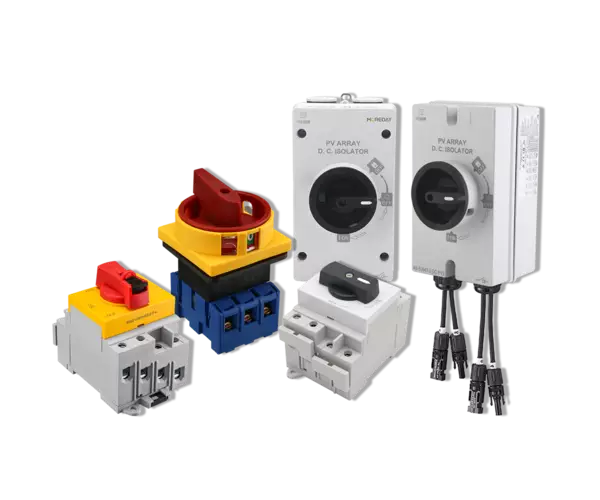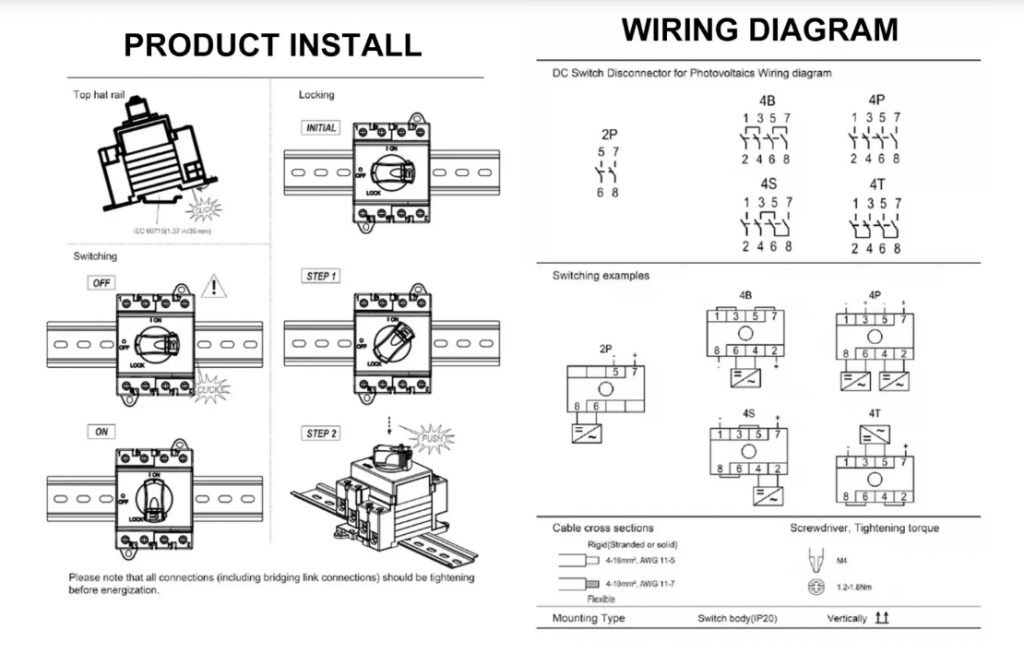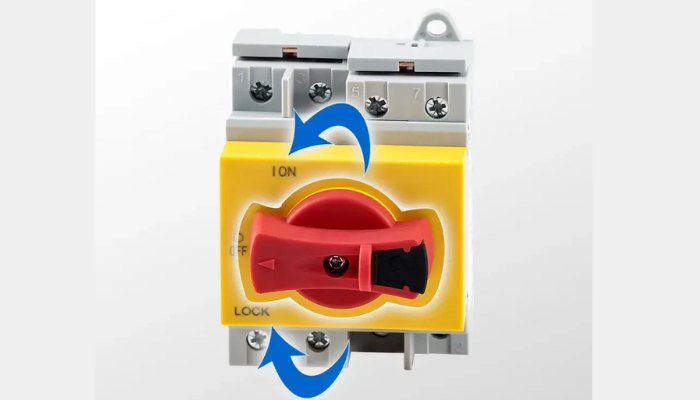Isolator switches are important safety components in electrical systems to ensure the safety of personnel and equipment during maintenance. These switches safely cut off circuits, preventing the flow of electricity and minimizing the risk of electrocution.
In this blog, we’ll delve into the intricacies of disconnect switches, exploring their importance and operational mechanisms to deepen your understanding of disconnect switches.
Table of Contents
ToggleWhat is an Isolator Switch?

An isolator switch is a type of switchgear used in electrical systems to ensure safe isolation of circuits. Its primary function is to physically disconnect the circuit to ensure it is completely de-energized during maintenance and repairs, preventing electrical shock or other hazards.
The isolator switch provides a visible break point, allowing technicians to see that the circuit has been safely disconnected. They are commonly used in high and low-voltage power systems, such as substations, industrial equipment, solar systems, and residential distribution panels, to ensure a safe operating environment.
To learn more about related devices, check out What is a Timer Switch.
Operating Principle of an Isolator Switch
The primary function of an isolator switch is to ensure safety by physically disconnecting the circuit. It is typically used during maintenance and repairs. The operating principle includes the following steps:
- Disconnecting the Circuit: The operator manually or electrically operates the isolator switch to open it, physically breaking the circuit to ensure no current flows.
- Providing a Visible BreakPoint: Once the switch is opened, it provides a clear physical break point, ensuring the operator can see that the circuit is disconnected.
- Safe Isolation: The isolator switch remains open to prevent accidental energizing, ensuring the safety of maintenance personnel.
When reconnecting the circuit, the operator closes the isolator switch to restore normal operation. The design of the isolator switch ensures reliable isolation and power connection in any state.
Advantages and Disadvantages of an Isolator Switch
Advantages of an Isolator Switch
- Isolator switches safely cut off circuits, preventing electric shocks. They act as protective barriers, minimizing the risk of accidents during maintenance tasks.
- Isolator switches allow for the isolation of specific sections for repairs. Using isolator switches makes maintenance work more efficient and safer, reducing downtime in electrical systems.
- They ensure consistent performance and operational stability, contributing to overall grid reliability and preventing unexpected interruptions.
Disadvantages of an Isolator Switch
- Implementing isolator switches can incur significant costs due to the initial investment required.
- Space limitations might be a drawback when installing isolator switches, especially in compact environments or crowded distribution panels.
- Proper planning and allocation are needed to fit the physical dimensions of isolator switches into existing setups.
- While manually operated isolator switches are effective, their switching functions still require human intervention.
Types of Isolator Switches
Isolator switches come in various types, each designed for specific applications based on their design and functionality:
Air Insulated Switch
Air-insulated switches use air as the insulating medium, typically for high-voltage transmission lines and substations. These switches are simple in structure, easy to maintain, and suitable for outdoor use.
Gas Insulated Switch
Gas-insulated switches use gases like sulfur hexafluoride (SF6) as the insulating medium, offering excellent insulation performance and a compact design. They are ideal for space-constrained environments such as urban substations and high-rise buildings.
Vacuum Insulated Switch
Vacuum-insulated switches use vacuum as the insulating medium, known for their high breaking capacity and long lifespan. They are commonly used in medium and high-voltage systems, especially in applications requiring frequent operations.
Load Break Switch
Load break switches can isolate circuits and interrupt current under load conditions. They are used in medium voltage distribution systems to provide rapid circuit protection during faults.
Fuse Combination Switch
Fuse combination switches combine an isolator and a fuse to protect and isolate circuits. They are typically found on the high-voltage side of distribution transformers, offering overload and short-circuit protection.
Disconnect Switch or Isolator
Disconnect switches are used in power systems to isolate circuits, ensuring safety during maintenance and repairs. They provide a clear physical break point when open, ensuring operator safety.
Installation and Operation of an Isolator Switch

When installing or operating an isolator switch, ensure you wear appropriate personal protective equipment (PPE) such as gloves and safety glasses to prevent injury. Also, verify that the circuit is powered off.
Installing the Isolator Switch
- Choose Location: Ensure the switch is installed in a convenient and safe location.
- Secure Installation: Mount the isolator switch firmly on the wall or mounting bracket.
- Connect Cables: Follow the circuit diagram to connect the cables correctly and securely.
- Safety Check: Inspect all connections and the installation for stability, ensuring there are no short circuits or loose connections.
Operating the Isolator Switch
- Power Off: Ensure the main power is off before operating.
- Manual Operation: Use the handle or button to open or close the isolator switch, observing the switch status indicator.
- Confirm Disconnection: During maintenance, ensure the switch is fully open with a visible break point.
Common Applications
Isolator switches are widely used in industrial, solar systems, residential, and commercial environments. In industrial settings, they safely isolate machinery for maintenance or repairs without affecting other systems and serve as emergency shutdown mechanisms to quickly cut off power in hazardous situations.
In solar systems, isolator switches safely disconnect solar panels from the power system, preventing backflow or electric shock hazards.
In residential applications, isolator switches are installed in distribution panels to isolate specific circuits for maintenance while keeping other areas powered and providing safety measures in areas like kitchens and bathrooms.
In commercial settings, isolator switches are integrated into power distribution units (PDUs) and data centers, ensuring safe power disconnection and stable operation during equipment maintenance.
Summary
Isolator switches are crucial for maintaining electrical safety by preventing accidents and ensuring efficient maintenance procedures. Understanding their functions can prevent mishaps and support effective maintenance.
Investing in high-quality isolator switches, such as MOREDAY‘s DC Isolator Circuit Breaker MDIS-40 1200V 32A, ensures reliable protection for your electrical systems. For more information or consultation on isolator switch applications, contact MOREDAY’s expert team.
Related reading: Solar transfer switch


